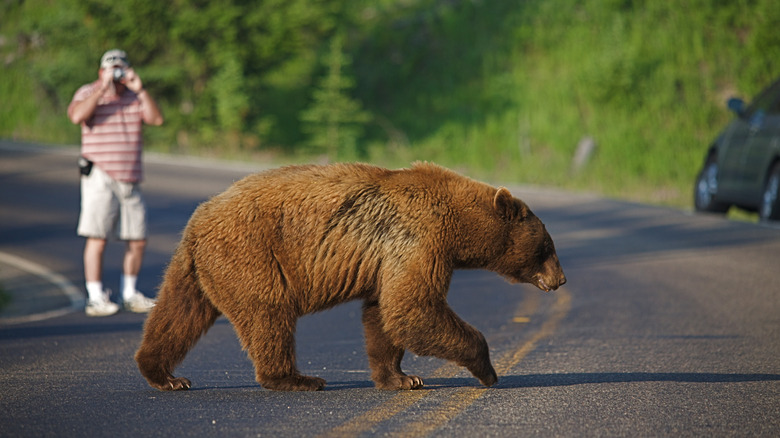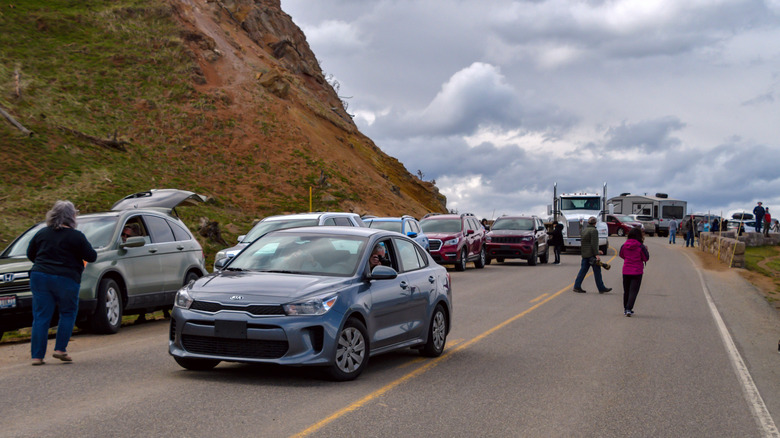One National Park's Notorious 'Bear Jams' Are Dangerously Out Of Control During The Government Shutdown
While some iconic U.S. landmarks are closed during the government shutdown, many national parks are at least partially open. And some of those parks are seeing problems start to mount due to the lack of staffing. In Yellowstone National Park, that means there's more "bear jams" — traffic jams caused when people stop to see a bear near or on the road.
Yellowstone is one of those parks where you're almost guaranteed to see a bear, and the bears are especially active in the fall, trying to pack on the pounds before hibernation. That means they're out and about and potentially getting close to the roads. Fall is one of the best times of year to visit Yellowstone National Park, and even with the government shutdown, people are still coming. Active bears and fewer staff to help police the people in the park, however, means traffic problems. In normal times, even with some management in place, these bear jam backups can be dangerous. Some people seem to abandon their common sense when they see a bear. Some might get out of their vehicles to snap a picture and be hit by oncoming traffic, resulting in injuries or death. Others might try to breach the park's policy of staying 100 yards from a bear, which is dangerous for the tourists and disturbing for the bears.
With the government shutdown, tourists are being left to fend for themselves. "The bear jams are pretty crazy. There's nobody overseeing those," Evan Stout, owner and operator of Yellowstone Wildlife Guide Company, told SFGATE. He wasn't the only one who noticed. Area photographer Jessica Hadley confirmed to SFGATE, "One of the most visible aspects of the shutdown in the parks has been the bear jams in Yellowstone."
Bear jams in Yellowstone National Park can put people and even bears at risk
One of the reasons people come to places like Yellowstone National Park is to see the wildlife, especially the bears. It's one of the few places in America where black bears and grizzlies live side by side. So it makes sense that when there's a bear spotted near a road, people often stop their cars to take a look. However, there's typically a park staffer who will help keep traffic moving, prevent people from parking dangerously, and remind people to stay in their cars for their own safety and that of the bear, and that isn't happening now.
Bear jams have long been an issue in the park. Yellowstone can sometimes see as many as 700 bear jams a year, and studies have recorded 12,386 bear jams at Yellowstone between 1990 and 2014. In all of those bear jams, the bears haven't been the problem — of all those 12,000-plus bear jams, not once has a bear attacked a photographing tourist. The problem instead is other people: There's an increased risk of getting hit by a car if you get out of yours to try to get closer to a bear.
Bear jams aren't good for bears, either; if bears get used to having people and cars around, they may lose their fear of humans. That could lead to bears trying to get access to human food, which in turn could lead them to having to be relocated or even killed. If you are in Yellowstone, always stay at least 100 yards away from a bear. Pack some binoculars or a zoom lens if you want to safely get a closer look.

